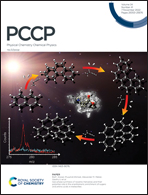Molecular dynamics simulations of cold welding of nanoporous amorphous alloys: effects of welding conditions and microstructures
Abstract
Nanoscale cold welding is a promising method in the bottom-up fabrication of nanodevices. Herein, cold welding mechanisms of Cu50Zr50 nanoporous amorphous alloys (NPAAs) are investigated by molecular dynamics simulations, along with the mechanical properties of the welded products. Effects of welding conditions and microstructural parameters are considered. Our results demonstrate that the welded joint has superior mechanical properties. The ultimate strength of the welded NPAAs can be as high as 94–99% that of the original NPAAs but 62–75% for the yield strength and elastic modulus. Voronoi analysis declares that the changes in atomic clusters of NPAAs caused by cold welding are mild. The welding conditions do not have remarkable influences on the mechanical responses of the welded structure. The NPAAs with smaller ligament sizes are more suitable for cold welding, benefiting from the size effect of amorphous alloys. We also successfully use cold welding to fabricate gradient NPAAs and repair fractured NPAAs. It is found that the ultimate tensile strength of the NPAAs changes very little with each successful cold welding. After ten fracture-welding cycles, the ultimate strength of the as-welded specimen is slightly lower than that of the raw materials.



 Please wait while we load your content...
Please wait while we load your content...